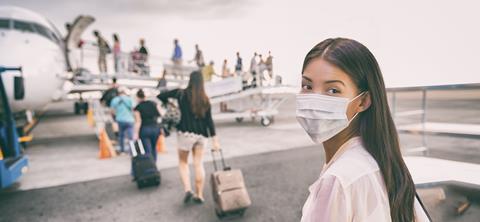Covid-19 has seen airlines slash schedules and supplanted Boeing’s 737 Max as the industry’s big story. But what happens when the jet is cleared to fly again?
In the year since the March 2019 grounding of the Boeing 737 Max – triggered by the 10 March crash of Ethiopian Airlines flight 302 – airlines globally have been clamouring for Boeing to get the aircraft back into the skies.
They desperately needed all those parked jets to meet pent up demand for air travel.

But in recent weeks, some demand has dried up – though perhaps only temporarily.
The evolving coronavirus outbreak has hammered the global aviation industry, causing virus-skittish passengers to put off travel and leading airlines to slash flight schedules.
In the process, the 737 Max has lost its crown as the industry’s top headline, replaced by a disease that is already having more impact on the airline sector than Boeing’s troubled narrowbody ever did.
It is hard to predict the long-term impact at this point, but the scale of the fallout became more visible on 4 March when United Airlines announced it would cut 10% of domestic flight schedules and 20% of international schedules in April. United has also brought in a hiring freeze.
How the airline will implement the cuts is unclear, but it represents a massive reduction in capacity: the carrier operates over 750 aircraft and is one of the top customers for the Max, with 14 examples in storage and 170 on order.
While the industry has previously shown its resilience – notably in the face of the 2003 SARS outbreak – there is every chance the coronavirus will have a knock-on impact on aircraft manufacturers.
Boeing’s plans for the speedy re-introduction of all those parked Max aircraft, which would plug a fire-hose of capacity into the market, suddenly look a lot less certain.
Although the airframer cannot hold off on deliveries forever – it needs cash coming through the door – there may be benefits.
A slow and steady drip feed will allow Boeing to ensure that everything is perfect with an aircraft that will face unprecedented levels of scrutiny.
In addition, it should better prepare the travelling public to fly again on a jet whose brand is tarnished in the short term, whatever Boeing decides to do with its name.
Plus, it could offer the manufacturer’s management, which has been fundamentally reshaped by the Max crisis, breathing room to decide on its product strategy.
Perhaps it is worth noting comments from Ryanair’s Michael O’Leary. Although he was referring to the coronavirus outbreak when he said that the travelling public would be “bored” of the disease within three weeks, a talent for forgetting may hold true for the Max and its history as well.























